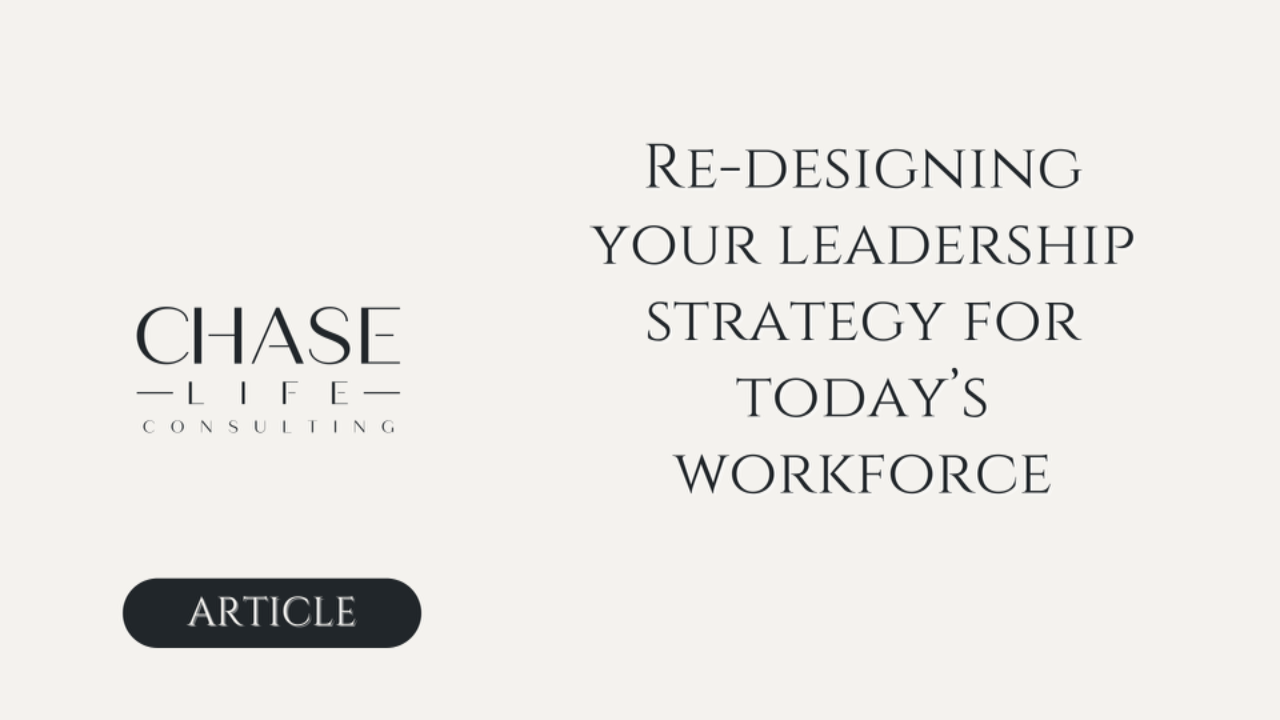Re-designing your leadership strategy for today’s workforce
Oct 01, 2023
What Is A Leadership Strategy?
A leadership strategy is a comprehensive plan or approach that outlines how a leader intends to achieve their goals and objectives while effectively guiding and influencing their team or organization.
A leadership strategy typically includes the following elements:
Why is it important for leaders to be prepared to evolve their leadership style and strategy?
Leaders are required to accomplish the goals and objectives of the team or organisation. It is incumbent upon them to take responsibility for the results (or lack thereof) of the team.
However, no leader will be perfect. Mistakes will happen. When mistakes happen, effective leaders will take responsibility, determine what went wrong, and make changes to both correct those mistakes, and prevent them from happening again in the future.
Hence, effective leaders will evolve and update their leadership style and strategy.
Furthermore, leadership requires constantly balancing the dichotomy of many qualities.
For instance, if a leader takes the notion of responsibility for the result too far, they can end up micromanaging the team. Which in turn inhibits the growth, responsibility and creativity of subordinates. They become passive and wait for direction at every turn.
However, if the leader becomes too hands-off, team members can become too spontaneous, think too much, form their own plans and strategies, and become chaotic and directionless.
Another important dichotomy is genuinely caring for team members, but not so much that the accomplishment of the team objectives are put into jeopardy.
Therefore an effective leader must walk the line between micromanagement and hands-off, between caring for individual team members and overall team success. This balance - as with physical balance - is not static, it requires constant adjustment.
Evolving Leadership Style For The Modern Workforce
We are all subject to economic and political cycles. Of course there are individual variances from region to region, industry to industry, and organisation to organisation.
However, in general, the modern workforce prioritises personal needs and welfare much more highly than in previous generations.
This highlights one of the dichotomies that we just introduced. The balance between caring for team members, but not at the expense of the organisation.
To be effective, the modern leader must develop the soft skills - emotional intelligence and empathy. Empathy does not mean agreeing with a counterpart. It means understanding their perspective and being able to describe it accurately enough that they feel sincerely heard and understood.
Leaders who refuse to adapt to this modern change risk becoming obsolete. Today’s workforce have options - especially high performers, and change jobs more frequently than ever before.
Of course, there will always be those industries and those organisations that will intentionally recruit staff who are susceptible to people-pleasing and sacrificing their own welfare to prove themselves or to avoid disagreement.
This is short-sighted. Chronically stressed and overwhelmed employees are physiologically unable to perform at their best.
The more stressed we become, the more the survival mechanisms of the brain become activated. This is not binary, but rather operates on a continuum.
With ever increasing levels of stress, the cortex - which is the part of the brain we use for logical, rational thought - becomes more and more disconnected. Our thinking becomes more instinctive and more short-term focused.
Cognitive functions such as focus, concentration, memory, learning, and creativity become impaired.
Therefore, a team culture that ignores employee needs and welfare is unlikely to get the best out of its workforce. It is at risk of creating a culture of doing the bare minimum to avoid getting into trouble.
However, as is the nature of the dichotomy, this can go too far, and organisations that become too anxious to respond to the workforce’s every request can become uncompetitive and fail.
One of the solutions is to include the team in setting their own standards that they will be held accountable to, and how their own performance will be assessed and evaluated. Whilst this may not always be appropriate in every situation, when utilised, this strategy significantly increases commitment and overall performance of the team.
The Role Of Personal Leadership In Team Leadership
All leadership begins with personal leadership - the ability to lead oneself.
The greater the level of responsibility, the greater the need to master one’s own mindset, emotional intelligence and emotional fitness.
An ego based leader will fail to listen to their team’s expertise, and perhaps even feel threatened by it.
An insecure leader will struggle to have confronting conversations.
A leader who struggles with perfectionism or over analysing will struggle to make important decisions.
A leader who struggles to handle uncertainty and change will often panic, overwork and overwhelm their team, and impose frantic, last minute changes.
As discussed earlier, our ability to access the full capacity and potential of our intelligence, our creativity, and our problem solving, depends on keeping the survival instincts of the brain from over-reacting.
EQ (emotional quotient) leads IQ (intelligence quotient). It does not matter how intelligent somebody is, if they do not have what we like to call “emotional fitness”, then their habitual responses, reactions, and decisions will be predominantly influenced by ego, fight, flight, or freeze.
One of the first rules of influence is that “your state leads their state”. If you want somebody to be calm, you have to lead them there with your own calmness. A leader who lacks emotional fitness is unable to do this.
It is the responsibility of leaders to become exceptional at leading themselves, so that they can lead others.
YOUR INVITATION TO WORK WITH US
At Chase Life Consulting we specialise in the physical and cognitive health optimization and strategic performance of female entrepreneurs and executives.
If you are looking to get into amazing shape and become a better leader within your business or organization APPLY HERE for our Private Mentorship Program.
We are excited to connect with you!
Rachel & David
xxx

